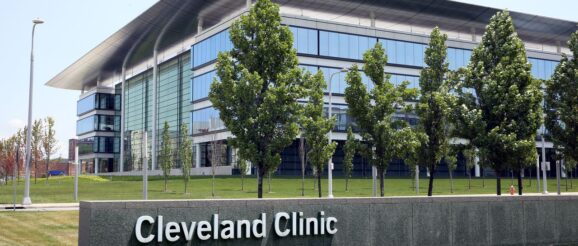Cleveland new home of state-funded ‘innovation district,’ with hospitals, universities working to boost research, jobs – cleveland.com

CLEVELAND, Ohio — Local and state leaders on Monday announced the creation of an “innovation district” in Cleveland, in which the three major hospital systems and two universities vowed to work together on research and to create more jobs in a pact buoyed by hundreds of millions of Ohio dollars.
The so-called “Cleveland Innovation District” includes the Cleveland Clinic, MetroHealth System, University Hospitals, Case Western Reserve University and Cleveland State University. While the Clinic said it plans to spend $300 million as part of the initiative, other organizations also anticipate spending millions to create what the state said will be a $3 billion economic impact on Cleveland and Ohio as a whole.
State agencies will kick in $265 million, with $155 million coming from the state Development Services Agency and $110 million from JobsOhio.
The project is the largest project JobsOhio, the state’s economic development corporation funded in part by profits from liquor sales, has ever committed to in terms of money and job creation.
Much of the initiative’s focus will be on researching infectious diseases, including the novel coronavirus, which has killed more than 400,000 Americans since it started spreading in late 2019.
The goal is to bring 20,000 jobs to Ohio within the next decade, capitalizing on Cleveland’s already well-known medical research work to also encourage additional startups and companies to invest. Half of those jobs will directly involve the hospitals and universities involved in the healthcare and IT fields, while the rest will be indirectly involved, according to Gov. Mike DeWine’s office.
“This bold, this innovative, this creative partnership that we’re announcing today will bear fruit for us not just this year, but for decades. Literally for decades into the future,” DeWine said during a virtual news conference in which local and state elected officials and leaders touted the new initiative.
The phrase “innovation district” has become trendy in some development and biotech circles. The districts are designed to attract startups and entrepreneurs who work toward a common goal to create more jobs and often redevelop part of a city that could benefit from real estate and economic development.
The “district” moniker is a bit of a misnomer for the Cleveland initiative, though, as stakeholders acknowledged during the news conference that there won’t be one central area of the city where all the activity will happen.
But much of the research is expected to take place at a new building the Clinic plans to build on its East Side campus to house the previously announced Global Center for Pathogen Research & Human Health. Hospital system President and CEO Dr. Tom Mihaljevic did not lay out a definitive timetable when the new building – part of its $300 million investment – would open.
The money the state agencies invest will pay for hospital research and to have students graduate with degrees involving science, technology, engineering and mathematics. Such expertise is needed for the projects the group plans to tackle.
CSU President Harlan Sands said during the news conference that the universities involved plan to double the number of people graduating with 19 specific degrees over the next decade.
“This investment is not just about creating a new opportunity for folks to be re-educated,” Sands said. “But it’s pairing it with these institutions where there are jobs, where there’s going to be opportunities in an emerging economy.”
Pieces already appear to be falling into place.
On Monday morning before the announcement, the Ohio Tax Credit Authority approved a 2.58%, 15-year tax credit for the Cleveland Clinic to create 1,000 research and development jobs by 2029 and retain hundreds of others that pay a combined $956.3 million. The tax credit is valued $35 million and could be worth more if the Clinic creates more jobs.
Other investments the involved organizations planned to make were not immediately clear. MetroHealth said in a news release that it intends to create the Community Responsive Care Institute to look at infectious diseases and to provide workforce training. The state will chip in $10 million for the new institute and the hospital will invest $20 million over five years.
University Hospitals also said in a statement that it will invest millions of dollars in research and job creation in next 10 years.
Sands said in an interview that CSU is still working out how much it will spend and how much it will receive from the state. A spokesman for CWRU said he had no information to provide on the topic.
Monday’s announcement is the second one from the state, following a similar program launched in March 2020 in Cincinnati.
Cincinnati’s “innovation district” is anchored by the University of Cincinnati and Cincinnati Children’s Hospital Medical Center, and JobsOhio plans to contribute $100 million over 10 years to spark $2 billion of research and real estate development and 15,000 STEM degrees.
The Cincinnati Innovation District, like Cleveland’s, builds on existing research and development efforts. However, the Queen City plan involves work done in one area of town, instead of all over the city like the Cleveland plan.
DeWine and company’s announcement is a separate “innovation district” from the one planned by local leaders in the city’s MidTown neighborhood. In that district, several nonprofit organizations, CSU and CWRU are discussing a development where researchers and students can collaborate and create something that fits within the surrounding communities.
MidTown Cleveland development corporation Executive Director Jeff Epstein said Monday that the goals of the newly announced plan lines up with the future of the East Side neighborhood.
